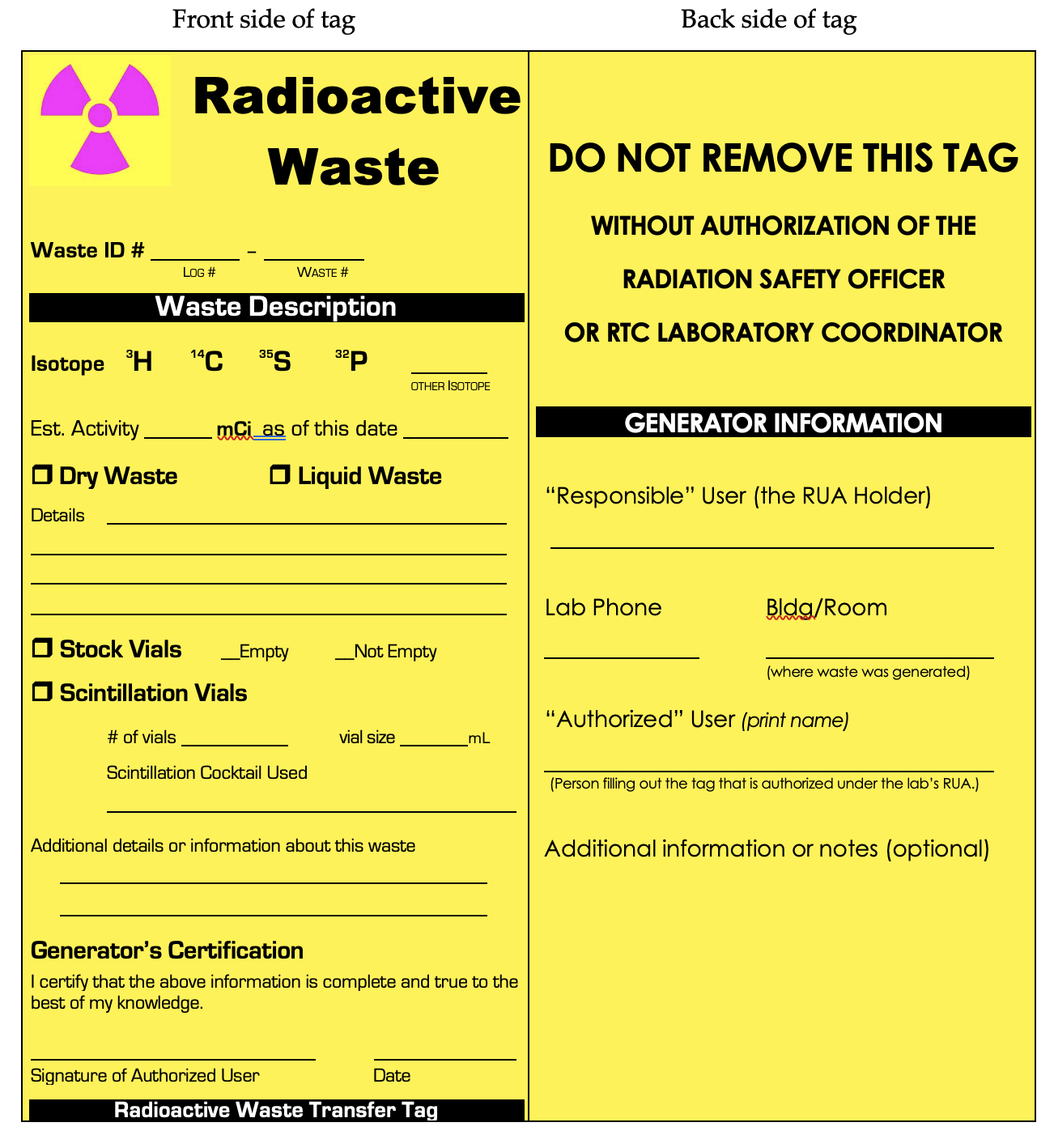San Francisco State University has an "Academic" radioactive materials license. The waste generated is classified as Low-Level Radioactive Waste (LLRW) and consists primarily of small sealed sources and unsealed beta-emitters such as hydrogen-3 (tritium) and carbon-14.
The campus RSO (Radiation Safety Officer) coordinates storage and disposal of unwanted sealed sources and waste generated from unsealed radioactive materials use, such as from laboratories. The RSO submits an annual report of radioactive "wastes" to the California Radiologic Health Branch (RHB).
Radioactive Waste Containers
Containers with radioactive waste must be labeled with the radiation symbol and the words 'radioactive material' or 'radioactive waste', along with the radioisotope and estimated activity of the waste. Containers must be in good condition and of a type that can securely contain both the radiation emissions and physical material.
Contact the EH&S office or Campus Radiation Safety Officer with questions or to get assistance.
Quick Links
Types of Radioactive Waste
Sealed sources can be placed in a plastic bag or box with an RSO-approved label or an attached filled-out rad waste tag.
Unsealed dry waste is placed inside a heavy duty clear plastic bag or yellow radioactive materials bags and the bag tied or taped closed. Liquid waste is collected in glass or poly containers equipped with a cap that can be securely closed. These are the "primary" containers or primary containment.
In addition to the secure container, the waste must be inside a second hard-sided collection container or behind a shield, usually made of ⅜ or ½ inch thick plexiglass (Lucite), to provide shielding from radiation emissions.
These radioisotopes have a relatively short half-life so this waste is eligible for the decay-in-storage option. Once the designated storage time has elapsed, the waste is no longer considered radioactive.
Devices with radioactive sources embedded inside must be disposed of properly at the end of their useful life. Contact the original vendor for assistance with returning these items. Disposing of them as radioactive waste is very expensive and is not the best option.
Radioactive Waste ID Tags
Affix a completed SFSU radioactive waste ID tag to the primary waste container.
Outer collection containers that are used to accumulate primary waste containers, such as DOT drums, must either have the tag or an RSO-approved label to identify the contents.
